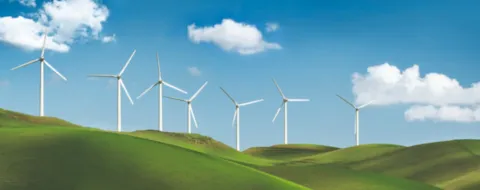Wind technology: our saviour in the fight against carbon emissions?
Global Wind Day is a worldwide event which occurs annually on June 15th. Organised by WindEurope and GWEC (Global Wind Energy Council), it’s an opportunity for the industry to celebrate wind technology, facilitate information sharing and promote the environmental benefits of wind power to the public. Now in its tenth year, Global Wind Day 2019 has an important role to play in highlighting the wind industry’s capabilities in the fight against climate change.
The world’s four warmest years on record were in 2015, 2016, 2017 and 2018. Carbon dioxide (CO2) emissions have continued to rise, from 33.1 gigatons in 2010 to 37.1 gigatons in 2018, that’s 37.1 billion tons! Despite all the scientific evidence there are still many climate change sceptics. Signed in 2015, the Paris Climate Agreement is a legally binding pact to limit global warming to between 1.5-2 degrees and prepare the world for a changing climate. But the world appears to be falling short of limiting the impact of human behaviour. To meet this or any target, we need to find ways to make every sector of society cleaner, including energy supply, industry, transportation, housing, food and agriculture.
The electricity sector is already making real progress. According to DNV’s Energy in Transition Outlook (ETO) 2018, renewables (solar PV and wind) will continue to grow rapidly and dominate the electricity mix by 2050. Solar PV will have a 40% share and wind 29% by 2050. Onshore wind dominates, but offshore wind’s contribution will grow more appreciably closer to mid-century, reaching about 20% of total wind production. The ETO highlights that today’s levels shows offshore wind at 0.3% and for onshore wind at 4.2% of global electricity production. However, forecasted levels for 2050 shows offshore wind at 6% and 23% from onshore wind. This represents a significant rise in the use of wind technology. But what’s behind the continued rise of wind?
The wind industry has seen significant cost reductions over the last few years. The cost of offshore wind has nearly halved between 2015 to 2018. Zero subsidy auctions are becoming more common within Europe. Technological advancements, such as increased turbine sizes, have enabled wind projects to generate greater power with fewer turbines. Better operational knowledge and systems, such as digital twins, have helped to improve the performance of wind farms, leading to greater energy generation efficiencies and higher revenues.
Knowledge and lessons learnt have also played a role in the ongoing success of the industry. Since the first modern wind farm was installed in California in 1975, the industry has strived to learn and improve technology and expertise throughout the entire wind farm lifecycle. This outlook has helped the industry succeed and reach new heights over the last nearly 50 years.
But it doesn’t stop there. Road transportation is one of the main sectors responsible for air pollution in many cities worldwide, as it produces significant greenhouse gas emissions. New technology coming onto the market, such as electric vehicles, could prove a powerful ally for wind. Wind turbines can produce energy 24 hours a day. Peak demand usually occurs during daylight hours, meaning that energy produced overnight is underutilised. However, charging electric vehicles overnight ensures that any energy is utilized during hours of less demand. This approach will help to decarbonize the transportation sector. Hybrid commuter jets are forecasted to start flying routes of up to 1,000 km between 2030 and 2035, giving wind a central role in powering sustainable mobility.
The public’s perceptions of wind power has changed over the years. In the early days of the industry, protests against the development of wind farms weren’t unusual. But times have changed. The energy industry, governments and the public are now fully aware of the environmental benefits that wind brings in the fight against climate change.
The move towards the low carbon future that DNV is working towards is a race against time. The news that climate change may have an impact on the very technologies that we need to deploy to mitigate its effects may mean that we need to run a little faster, but it does not mean that we should change direction!
Mankind has many clean energy technologies to utilize in its war on carbon emissions, including energy efficiency, biomass, hydropower and solar. Wind will continue to be one of those technologies acting as a spearhead in the energy transition battle. With its iconic design, ability to revitalize local communities and benefit economies, wind is no longer a challenger technology and is fast becoming the ‘norm’ in a clean renewable low carbon future.
Today, wind power is not only the cheapest renewable technology option for new generation – but also the cheapest new generation option in many cases when you compare its levelized cost of energy with that of traditional polluting fossil fuels. Therefore, on the 10-year celebration of the Global Wind Day: we should all embrace the achievements made by the industry and its supporters over the last decade I wish you all a great Global Wind Day!
6/14/2019 9:00:00 AM
